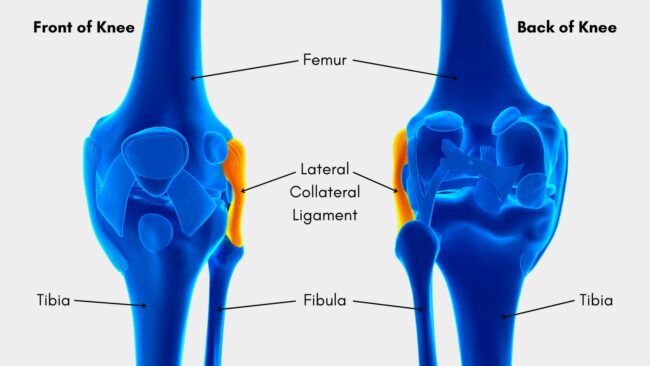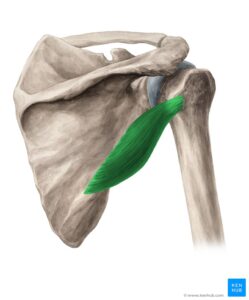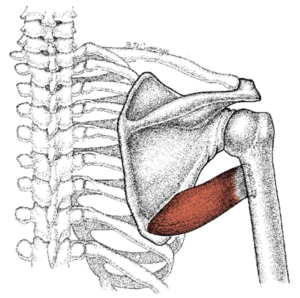Introduction
Injuries to the lateral collateral ligament (LCL) are less common than other knee injuries but can still significantly impact mobility and stability. Not to be confused with the MCL (Medial Collateral Ligament), the LCL, located on the outer side of the knee, plays a crucial role in preventing excessive side-to-side movement. Proper rehabilitation and strengthening exercises are essential for recovering from an LCL injury. This guide will provide detailed lateral collateral ligament exercises designed to help you regain strength, stability, and mobility. Whether you’re recovering from an injury or looking to prevent one, these exercises are vital for maintaining knee health.
Understanding the Lateral Collateral Ligament (LCL)
The LCL is one of the key ligaments in the knee, connecting the femur (thigh bone) to the fibula (smaller bone of the lower leg). It helps stabilize the knee and prevent excessive outward movement. LCL injuries typically occur due to direct blows to the inside of the knee or sudden changes in direction.
Symptoms of an LCL Injury:
- Pain and tenderness on the outer knee
- Swelling and possible bruising
- Instability or a feeling of the knee “giving way”
- Difficulty in lateral movements
Effective rehabilitation is crucial for recovering from an LCL injury and preventing further damage.
LCL Injury Recovery Timeline
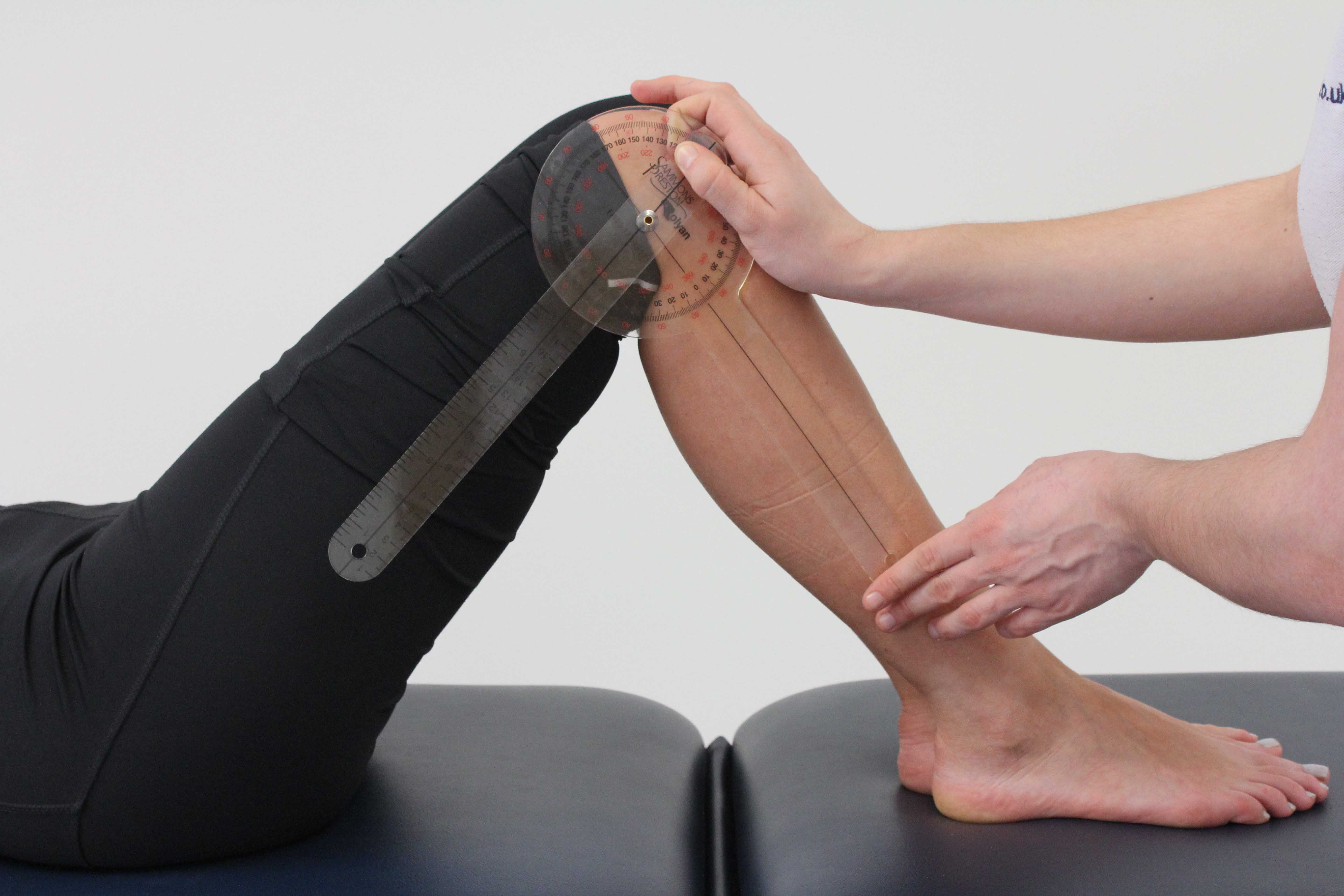
Recovering from an LCL injury involves several stages, each with specific goals and milestones. The timeline can vary depending on the severity of the injury and the individual’s overall health. Here is a general outline of the LCL recovery timeline:
Stage 1: Acute Phase (0-2 Weeks)
Goals:
- Reduce pain and swelling
- Protect the injured ligament
Activities:
- Rest and avoid putting weight on the injured leg
- Use crutches if necessary
- Apply ice packs to the knee for 15-20 minutes every 2-3 hours
- Elevate the leg to reduce swelling
- Wear a knee brace to stabilize the joint
Stage 2: Early Rehabilitation (2-6 Weeks)
Goals:
- Restore range of motion
- Begin gentle strengthening exercises
Activities:
- Continue using a knee brace as needed
- Start gentle range of motion exercises like heel slides and quad sets
- Gradually introduce low-impact activities such as swimming or stationary cycling
- Begin light strengthening exercises focusing on the quadriceps and hamstrings
Stage 3: Intermediate Rehabilitation (6-12 Weeks)
Goals:
- Increase strength and stability
- Improve balance and proprioception
Activities:
- Progress to more challenging strengthening exercises like straight leg raises, standing hamstring curls, and wall slides
- Incorporate balance exercises such as single-leg stands and balance board exercises
- Continue low-impact cardiovascular activities
- Gradually increase the intensity and duration of exercises
Stage 4: Advanced Rehabilitation (12+ Weeks)
Goals:
- Achieve full strength and stability
- Prepare for return to sports or high-impact activities
Activities:
- Perform advanced strengthening exercises like single-leg squats, lateral band walks, and step-ups
- Incorporate sport-specific drills and plyometric exercises
- Continue balance and proprioception training
- Gradually reintroduce high-impact activities under the guidance of a healthcare professional
Stage 5: Return to Activity (4-6 Months)
Goals:
- Safely return to normal activities and sports
- Prevent re-injury
Activities:
- Follow a maintenance exercise program to keep the knee strong and stable
- Wear protective gear if recommended (e.g., knee brace)
- Continue regular check-ins with a healthcare professional to monitor progress
Importance of Lateral Collateral Ligament Exercises
Rehabilitating the LCL involves a mix of rest, physical therapy, and specific exercises aimed at strengthening the knee and restoring its function. The benefits of targeted LCL exercises include:
- Enhanced Stability: Strengthening the muscles around the knee enhances joint stability.
- Improved Flexibility: Maintaining or improving the range of motion in the knee.
- Pain Reduction: Reducing pain and discomfort associated with LCL injuries.
- Prevention of Re-Injury: Building strength and resilience to avoid future injuries.
- Accelerated Recovery: Speeding up the healing process through targeted exercise.
Essential Lateral Collateral Ligament Exercises
Before starting any exercise routine, consult with a healthcare professional to ensure these exercises are suitable for your specific condition. Begin with low-impact exercises and gradually progress to more advanced movements as your strength and stability improve.
Lateral Collateral Ligament Exercises #1. Isometric Quad Sets
:max_bytes(150000):strip_icc()/Verywell-02-2696617-ShortArcQuads01-SM-5979fb1303f4020010f431d2.gif)
Purpose: Strengthen the quadriceps without moving the knee joint.
How to Perform:
- Sit on the floor with your injured leg straight and the other leg bent.
- Tighten the muscles at the top of your thigh by pressing the back of your knee flat against the floor.
- Hold for 5-10 seconds, then relax.
- Repeat 10-15 times.
Lateral Collateral Ligament Exercises #2. Heel Slides

Purpose: Improve knee flexibility and range of motion.
How to Perform:
- Lie on your back with both legs straight.
- Slowly slide the heel of your injured leg towards your buttocks, bending the knee as far as comfortable.
- Hold for a few seconds, then slide your heel back to the starting position.
- Repeat 10-15 times.
Lateral Collateral Ligament Exercises #3. Straight Leg Raises
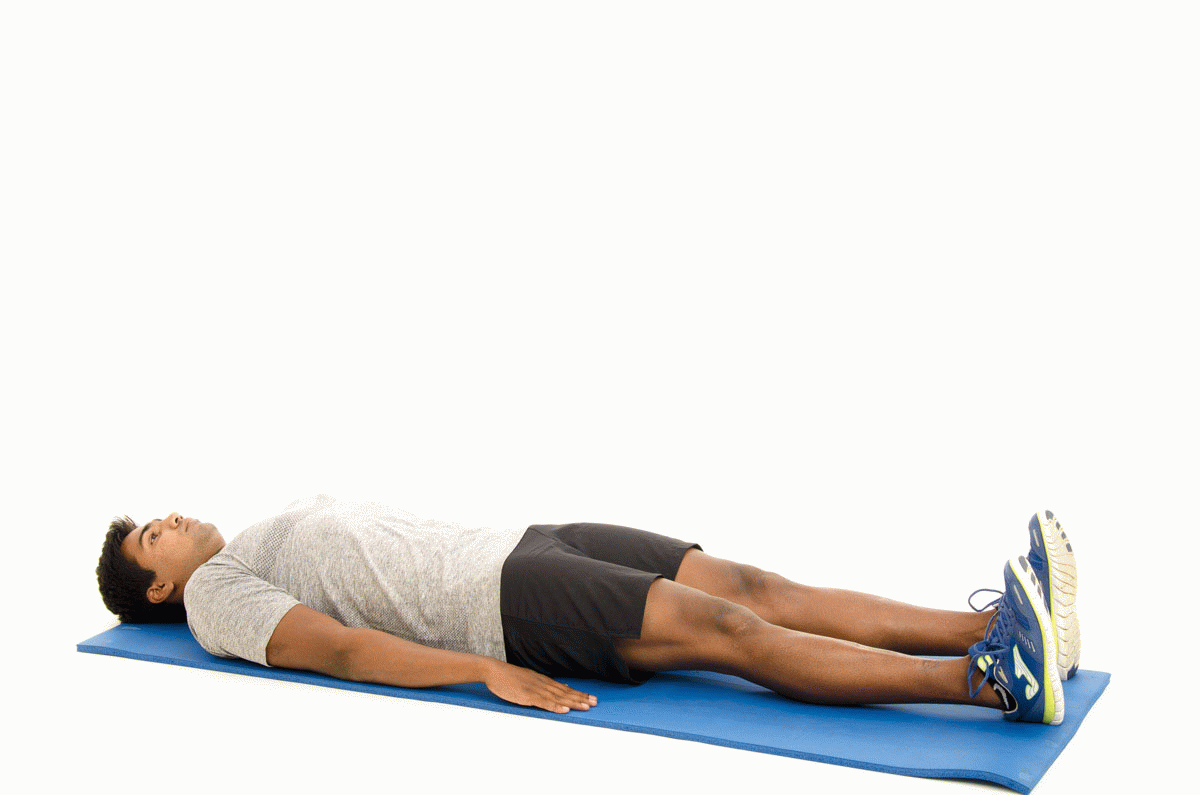
Purpose: Strengthen the quadriceps and hip flexors.
How to Perform:
- Lie on your back with one leg bent and the other leg straight.
- Tighten the thigh muscles of your straight leg and slowly lift it to the height of your bent knee.
- Hold for a few seconds, then lower it slowly.
- Repeat 10-15 times.
Lateral Collateral Ligament Exercises #4. Standing Hamstring Curls

Purpose: Strengthen the hamstrings and improve knee stability.
How to Perform:
- Stand with your feet shoulder-width apart and hold onto a chair or wall for balance.
- Bend your injured knee, bringing your heel towards your buttocks.
- Hold for a few seconds, then lower it slowly.
- Repeat 10-15 times.
Lateral Collateral Ligament Exercises #5. Wall Slides
:max_bytes(150000):strip_icc()/Verywell-03-2696617-WallSlide01-SM-5979fb23d088c000106ea8d7.gif)
Purpose: Strengthen the quadriceps and improve knee stability.
How to Perform:
- Stand with your back against a wall and feet shoulder-width apart.
- Slowly slide down the wall by bending your knees, keeping your back straight.
- Hold for a few seconds, then slide back up to the starting position.
- Repeat 10-15 times.
Lateral Collateral Ligament Exercises #6. Side-Lying Leg Lifts
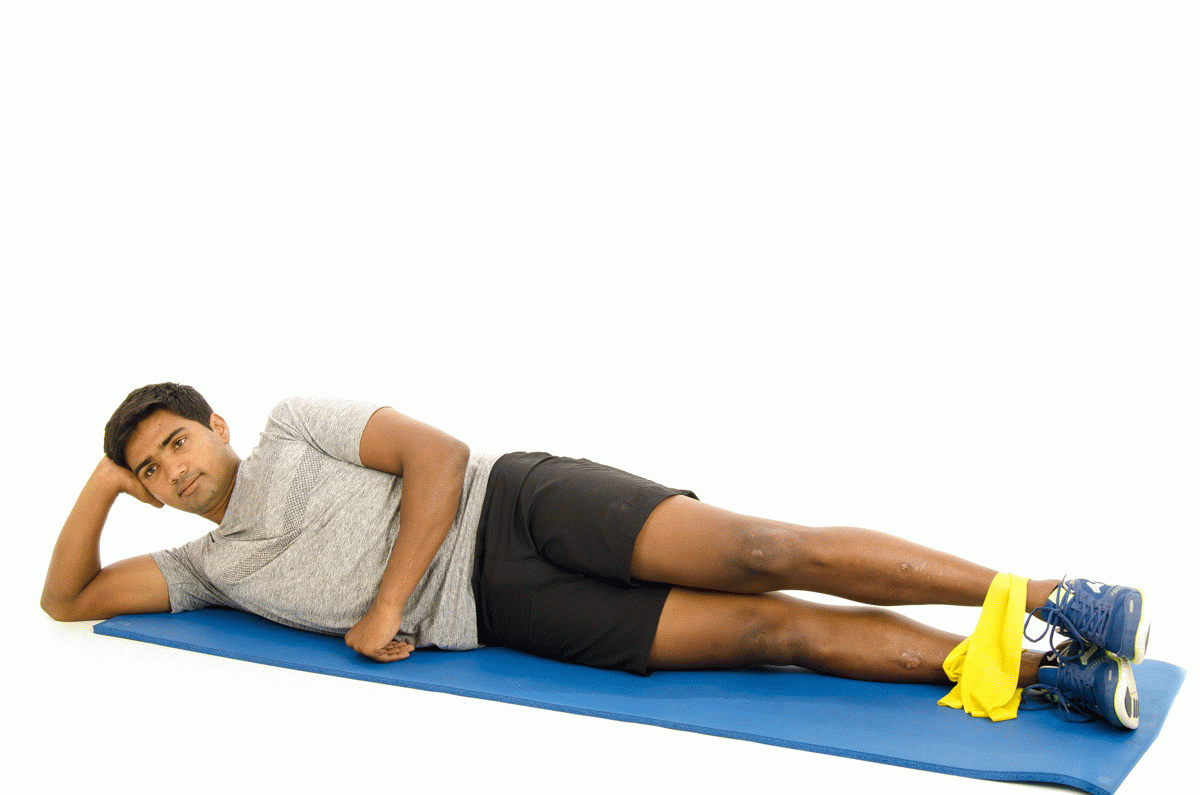
Purpose: Strengthen the hip abductors, which support knee stability.
How to Perform:
- Lie on your uninjured side with your legs straight.
- Lift your injured leg up, keeping it straight and avoiding rotating your hip.
- Hold for a few seconds, then lower it slowly.
- Repeat 10-15 times.
Lateral Collateral Ligament Exercises #7. Calf Raises
:max_bytes(150000):strip_icc()/48-Standing-Calf-Raises-GIF-50e0467350804dddb4a9a15d6ee5d009.gif)
Purpose: Strengthen the calf muscles, which support the knee.
How to Perform:
- Stand with your feet shoulder-width apart and hold onto a chair or wall for balance.
- Rise up onto your toes, then slowly lower your heels back to the ground.
- Repeat 10-15 times.
Lateral Collateral Ligament Exercises #8. Balance Exercises

Purpose: Improve proprioception and knee stability.
How to Perform:
- Stand on your injured leg, holding onto a chair for support if necessary.
- Try to maintain your balance for 30 seconds.
- As you improve, try balancing without holding onto anything and for longer periods.
Advanced Lateral Collateral Ligament Exercises
Once you’ve regained basic strength and stability, you can progress to more advanced exercises. These should be done under the guidance of a physical therapist or healthcare professional.
Advanced Lateral Collateral Ligament Exercises #1. Single-Leg Squats

Purpose: Strengthen the quadriceps, hamstrings, and glutes, enhancing knee stability.
How to Perform:
- Stand on your injured leg with your other leg extended in front.
- Slowly lower into a squat position, keeping your knee aligned with your toes.
- Hold for a few seconds, then return to the starting position.
- Repeat 10-15 times.
Advanced Lateral Collateral Ligament Exercises #2. Lateral Band Walks
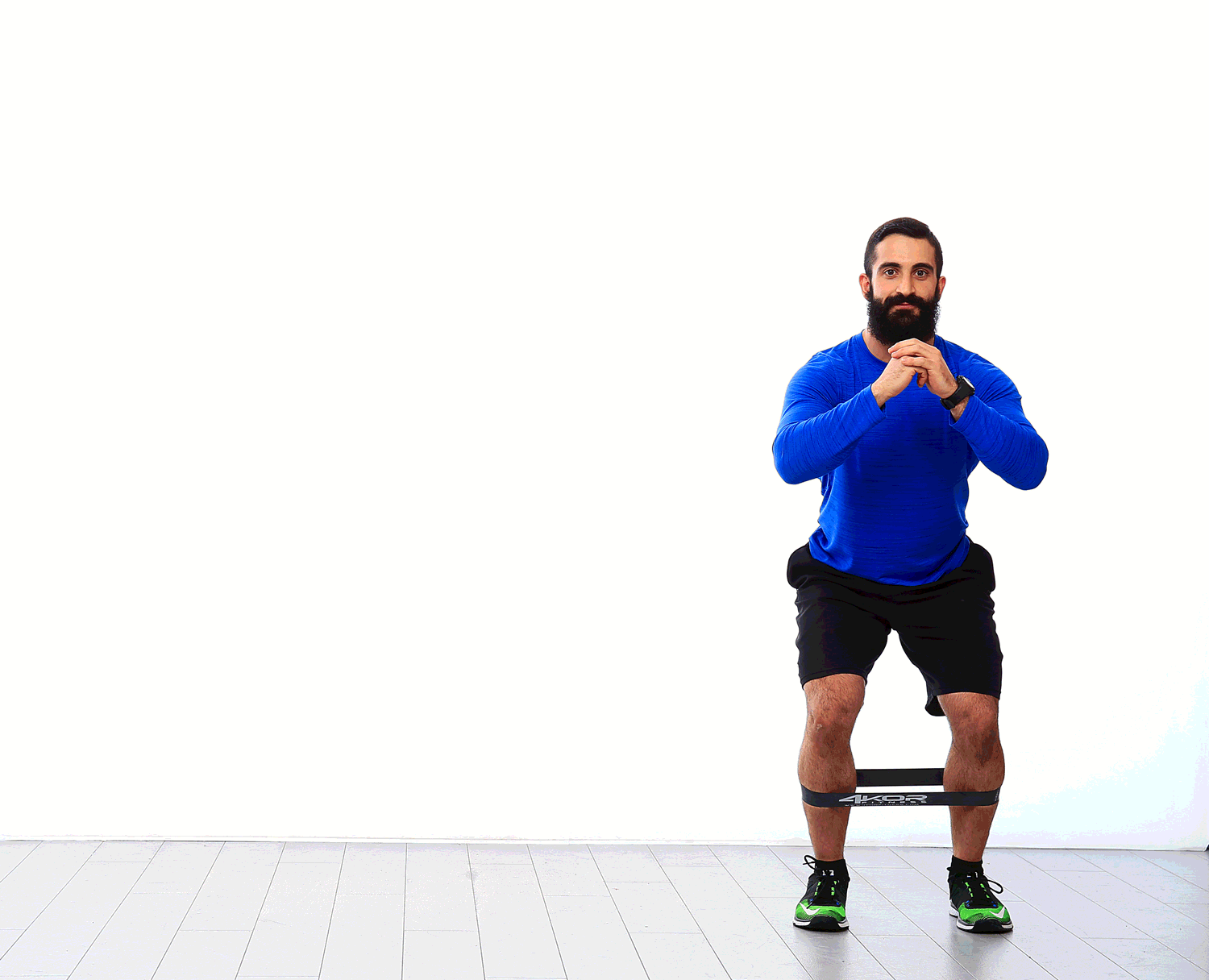
Purpose: Strengthen the hip abductors and improve knee stability.
How to Perform:
- Place a resistance band around your legs just above the knees.
- Stand with your feet shoulder-width apart and slightly bent knees.
- Step to the side, maintaining tension in the band, then bring your other foot to meet the first.
- Repeat 10-15 steps in each direction.
Advanced Lateral Collateral Ligament Exercises #3. Step-Ups
Purpose: Strengthen the quadriceps and glutes.
How to Perform:
- Stand in front of a step or bench.
- Step up with your injured leg, then bring your other leg up to meet it.
- Step down with your non-injured leg first.
- Repeat 10-15 times.
Tips for Safe and Effective LCL Rehabilitation

- Start Slow: Begin with low-impact exercises and gradually increase intensity.
- Listen to Your Body: Stop if you experience pain and consult with a healthcare professional.
- Consistency is Key: Perform your exercises regularly to see the best results.
- Warm-Up: Always warm up your muscles before starting your exercises.
- Stay Hydrated: Drink plenty of water to keep your muscles hydrated and functioning properly.
Conclusion
Recovering from an LCL injury requires dedication, patience, and the right exercises. By incorporating these lateral collateral ligament exercises into your rehabilitation routine, you can strengthen your knee, improve stability, and return to your regular activities with confidence. Remember to consult with a healthcare professional before starting any new exercise regimen, and always listen to your body to prevent further injury.
If you found these lateral collateral ligament exercises helpful, share this post with others who might benefit! Don’t forget to subscribe to our newsletter for more tips on injury prevention and rehabilitation. Follow us on social media for daily updates and inspiration on staying active and healthy.

